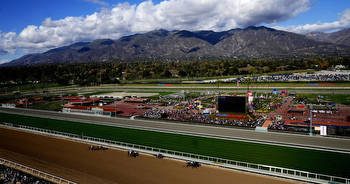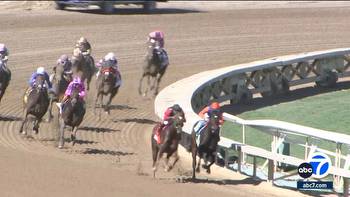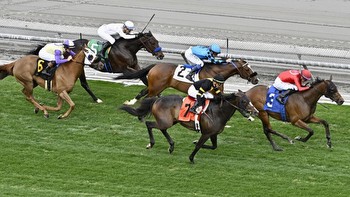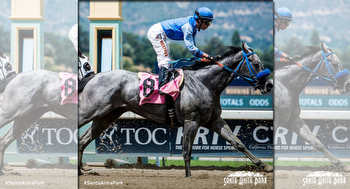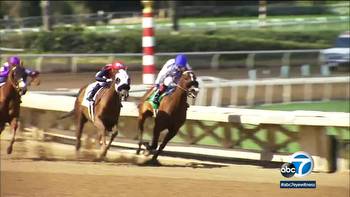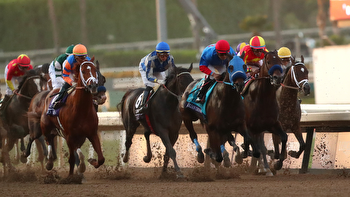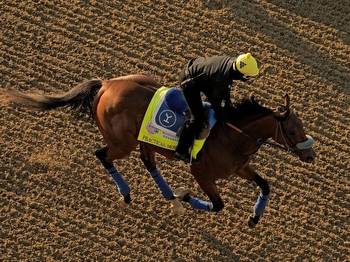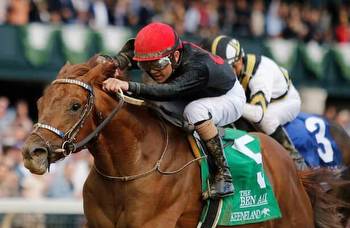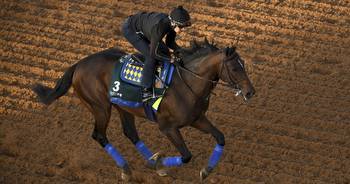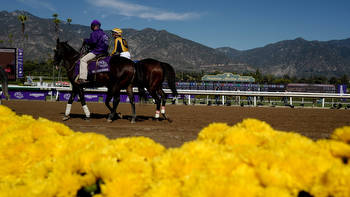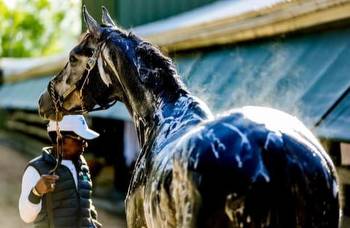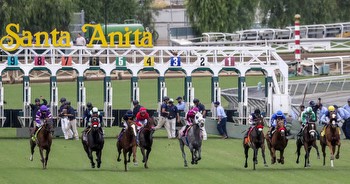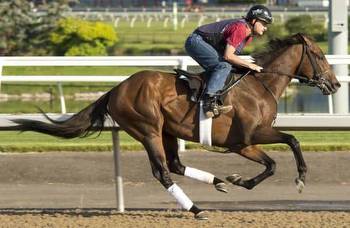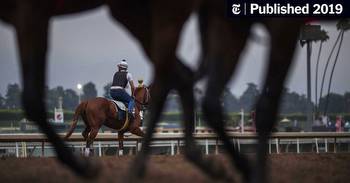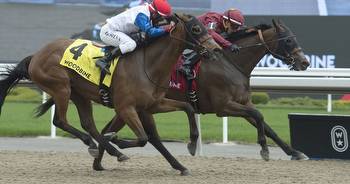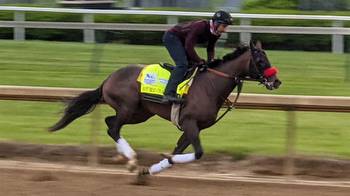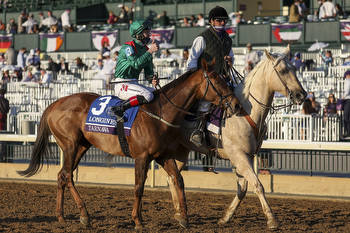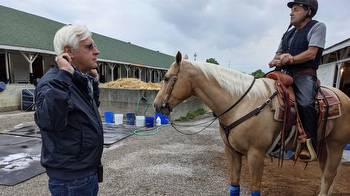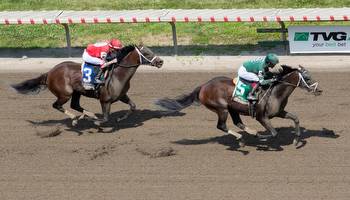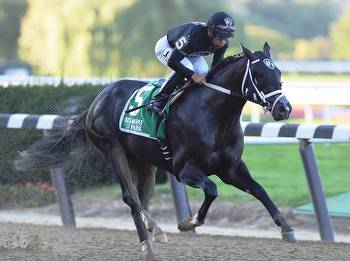Bettors may harden opinions with Breeders' Cup staying put
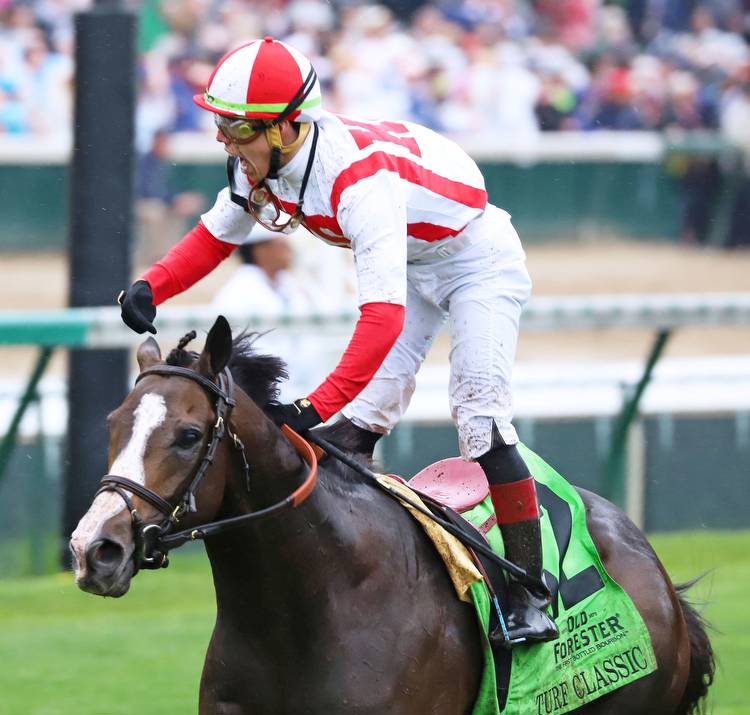
When was the last time that the racing industry was so focused on the outcome of one meeting of blue bloods as it was Thursday with the directors of the Breeders’ Cup?
Cloaked in secrecy, the board emerged from its Lexington, Ky., bunker to announce that it had voted unanimously to keep its Nov. 1 and 2 championships at Santa Anita rather than move them to Churchill Downs for a second straight year. The decision came despite 30 racehorse deaths in the six-month meet that ended last weekend in southern California.
“It is clear that meaningful and effective reforms and best practices have been implemented in recent months at Santa Anita,” Breeders’ Cup boss Craig Fravel said. “We fully embrace those reforms and will devote our time and energy in the coming months to further advance those efforts.”
While this decision led to predictably polarized reactions from the racing industry, it also stopped the needle from twitching for bettors considering off-shore and overseas futures markets for the Breeders’ Cup.
Take the $6 million Classic. The board’s decision means that trainer Bob Baffert gets to keep Met Mile runner-up McKinzie (8-1 off shore, 12-1 in Europe per Oddschecker) at home on a track where he was a Grade 1 winner last winter. Had he been forced to go to Churchill Downs, McKinzie’s role as a favorite would have been uncertain, especially after a disappointing 12th at 7-2 odds in last year’s Classic.
Keeping the Classic at Santa Anita will work against a Kentucky course horse like Seeking The Soul (20-1, 25-1). His win two weeks ago in the Grade 2 Stephen Foster Stakes ran his record to four wins and 10 in-the-money finishes in 12 starts at Churchill Downs. But instead of staying home, the 6-year-old trained by Dallas Stewart must race on a track that he has never seen before.
Conversely, the move might lead bettors to take another look at Catalina Cruiser (20-1, 25-1), John Sadler’s talented but lightly raced 5-year-old. Where he is 4-for-4 at home in southern California, he was a beaten 9-10 favorite last fall in the Breeders’ Cup Dirt Mile at Kentucky, taking a right turn out of the gate and never factoring in the race.
The Breeders’ Cup Turf presents a different paradigm. Instead of course horses, handicappers will consider the likely weather. Where damp weather and soft grass would have been legitimate concerns in a northern Kentucky autumn, they are a waste of time to think about in southern California.
While this may work against defending champion Enable (7-2, 4-1) if she makes the return trip, it could work to the advantage of Chad Brown’s top-ranked U.S. horse Bricks And Mortar (7-1, 10-1), a 5-year-old that thrives on firm ground.
Meanwhile, The beaten favorite in the Epsom Derby, Sir Dragonet (12-1, 16-1), might stay away. He covets the sort of softer ground that was beneath him when he won his first two races. Keeping the Breeders’ Cup at Santa Anita may have trainer Aidan O’Brien thinking that his 3-year-old colt might be better off staying home and ending his season in October at the British Champion Stakes.
With doubt erased about the whereabouts of the championships, bettors with access to futures markets may have new incentive to do some extra handicapping and chase some prices. But that opportunity will not last long. And even then, betting the Breeders’ Cup four months out could be called a crap shoot.
If only it were that easy.
Racing news and opinions
Avie’s Flatter (5-2), One Bad Boy (7-2) and Skywire (4-1) are the top choices on the morning line this weekend for the 160th running of the $855,651 Queen’s Plate Stakes, the first race of the Canadian Triple Crown for 3-year-olds. Sired by Flatter (no relation), trained by Josie Carroll and ridden by Javier Castellano, Avie’s Flatter drew the outside post in the 14-horse field, and he moves from turf back to the Woodbine all-weather surface on which he is 2-for-2. Maiden winner One Bad Boy has his blinkers removed after finishing second as the favorite in a $75,000 stakes race last month at Golden Gate Fields. Trained by two-time Queen’s Plate winner Mark Casse, Skywire was gaining ground late finishing second in last month’s Grade 3 Marine at Woodbine, and he should be helped by the longer, 1¼-mile distance. With no obvious front-end speed in the field, this race may set up best for the mid-pack, Steve Asmussen trainee Tone Broke (6-1). He flattened to second chasing a hot pace in the $100,000 Sir Barton last month on Preakness day at Pimlico. I usually shy away from horses getting their fifth jockey in as many races. But if this one is not contested with a blistering pace up front, then Luís Contreras and Tone Broke should be there at the end. The Queen’s Plate is scheduled for Saturday at 5:36 p.m. EDT.
With the signature of Gov. Gavin Newsom (D-Calif.), the California Horse Racing Board has been given the authority to call off racing at any given track that it sees fit to close. “Business as usual has resulted in too many horse deaths,” said Newsom, referring to Santa Anita. The CHRB has been toothless during this crisis, satisfying neither side during the last six months. For instance it called on The Stronach Group, owners of Santa Anita, to shut the track down a week early, but that recommendation was ignored. Under the new law, the board could have locked the gates unilaterally. The law that was hastily passed by the California legislature also allows the CHRB to make emergency declarations without the usual 10-day waiting period required by the state’s open public-meeting law.
Still looking for his first win in America, two-time Dubai World Cup winner Thunder Snow may make his next start in either the Whitney at Saratoga or the Pacific Classic at Del Mar. Trainer Saeed bin Suroor told At The Races in England that Thunder Snow would also be pointed to the Jockey Club Gold Cup at Belmont Park, where he finished second last year, before taking another shot at the Breeders’ Cup Classic, where he was third last fall. Thunder Snow was last seen finishing third in the Met Mile, running his record to 0-for-4 on U.S. tracks. But he has finished in the money in each of his starts since an embarrassing, rodeo-like performance coming out of the gate in the 2017 Kentucky Derby.
Just what racing did not need was the sudden retirement this week of British turf sprinter Blue Point. It happened Monday, only two days after he became the first horse in 16 years to win two races in one week at Royal Ascot. The 5-year-old horse sired by Shamardal was assigned by Godolphin to start his stallion career next spring at Dalham Hall Stud in England. “Blue Point is sound and well,” trainer Charlie Appleby said. “He owes us nothing, so we will retire him on a high.” In an era when horses race to breed rather than breed to race, it is difficult to find fault from a business sense with what Appleby said. Blue Point will command stud value that will far exceed the $3,342,221 he earned on the racetrack. But this is a big loss for a sport that is desperate to keep its stars on the track the second half of this year. So be it.
The comeback of Arizona Downs did not last long. After a May 24 re-opening, the summer season there ended four weeks early last Sunday when the Prescott Valley track ran out of money. Track management told the Arizona Republic that its off-track betting shops were unsuccessful getting permission to bring in live video – and more money – from bigger tracks. The Arizona Downs season was originally scheduled to end July 21. Formerly known as Yavapai Downs, the track had been closed for nine years before J&J Equine Enterprises bought it for $3.22 million at a bankruptcy sale.
Ron Flatter’s weekly racing column is posted every Friday morning at VSiN.com. It appears more frequently during coverage of big races. You may also hear the Ron Flatter Racing Pod posted Friday mornings at VSiN.com/podcasts. On the current edition from Santa Anita, Hall of Fame trainer Richard Mandella offers his thoughts about the ups and downs of the past six months at the track as well as a look at some of his horses, including Omaha Beach. Turf writer John Cherwa of The Los Angeles Times engages in a thorough discussion of how the sport handled 30 racehorse deaths over the past six months. The RFRP is also available via Apple, Google and Stitcher.

